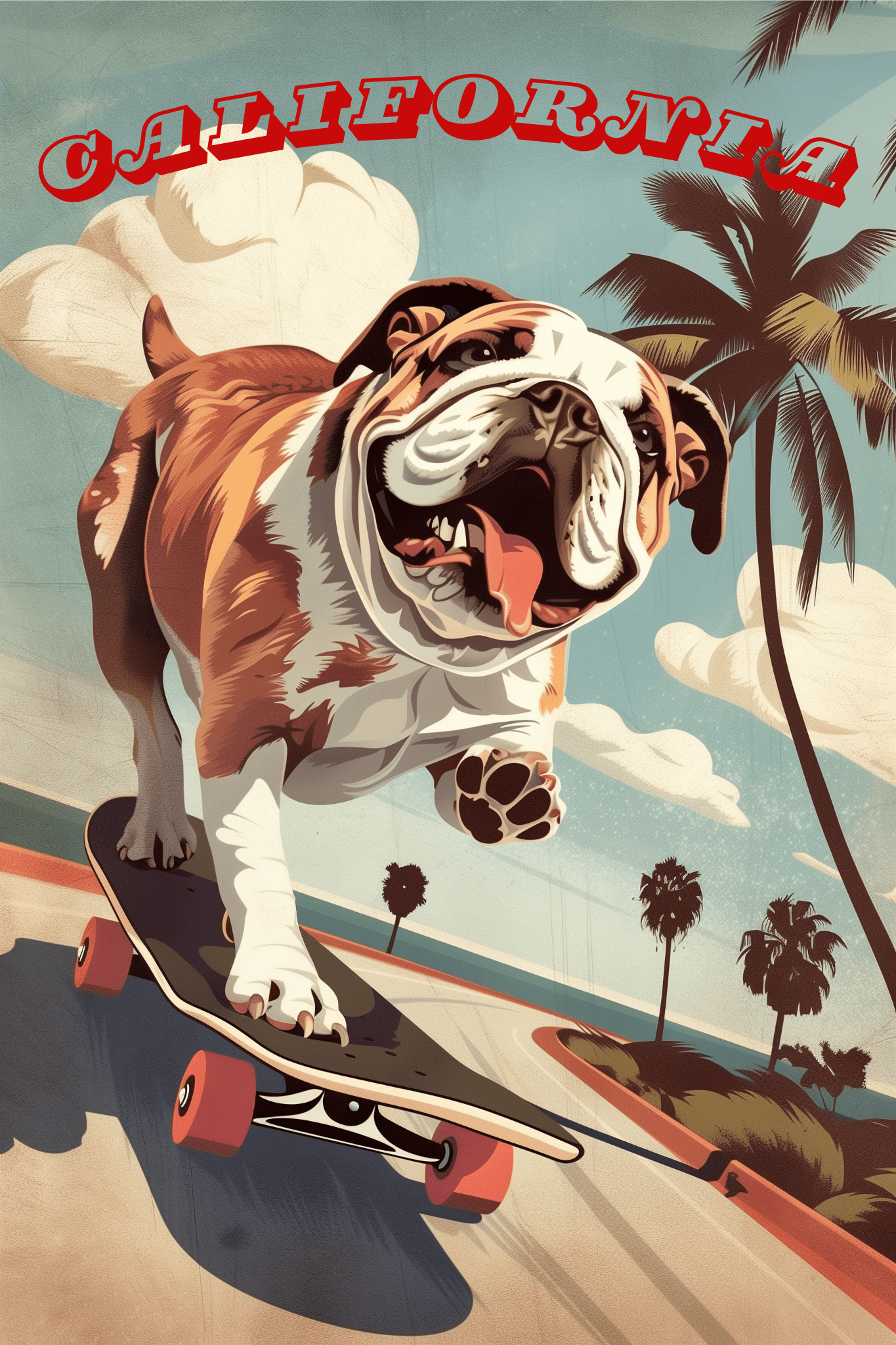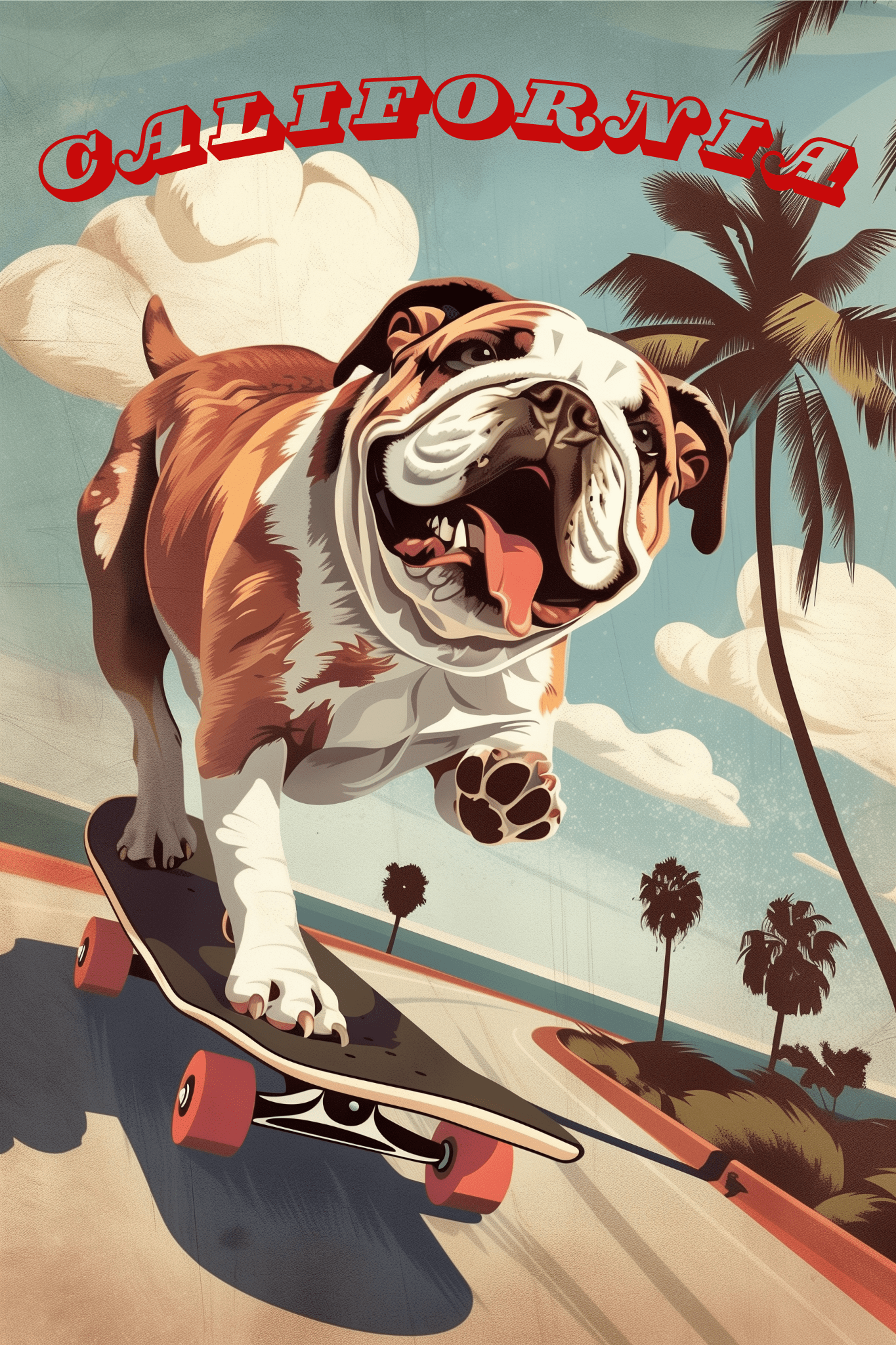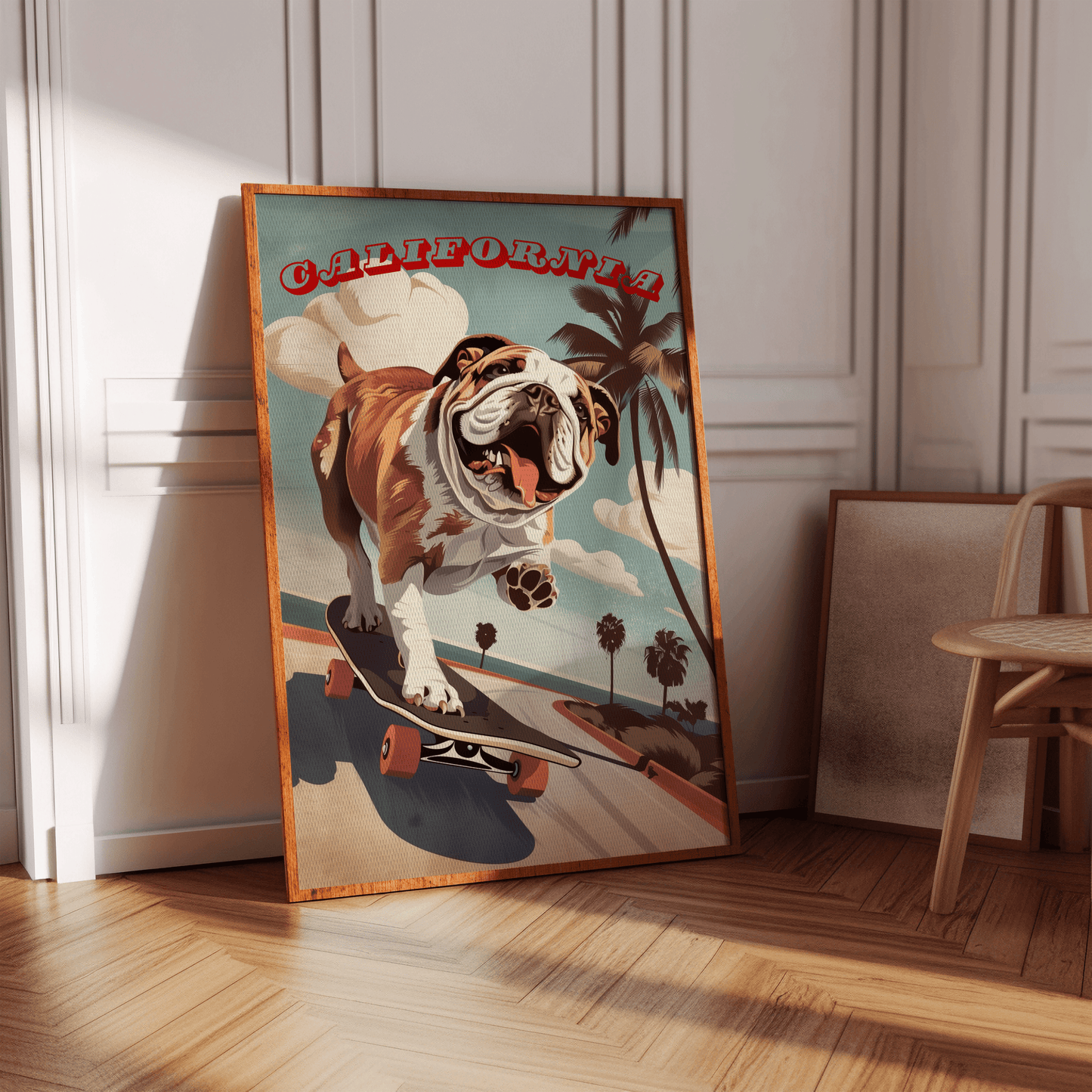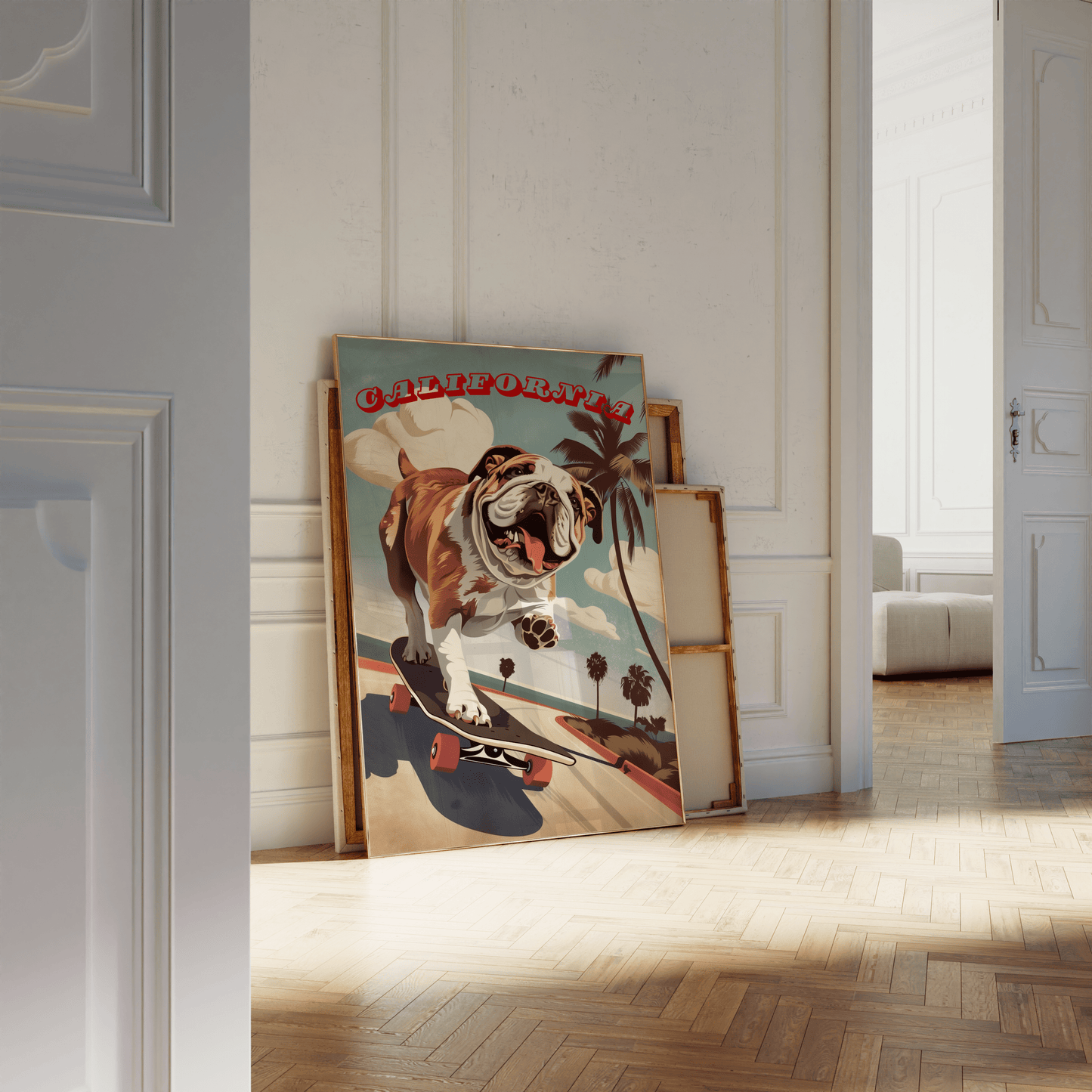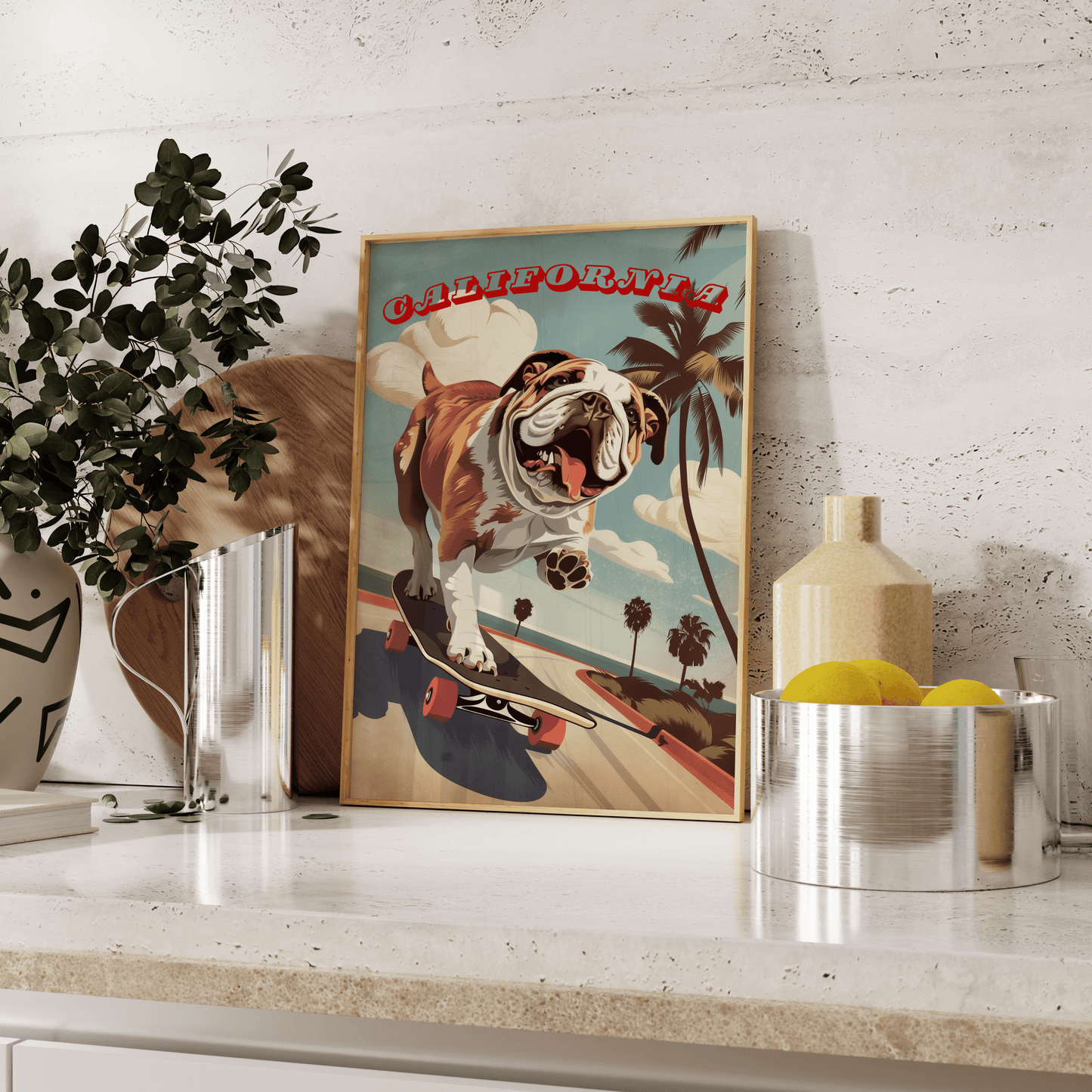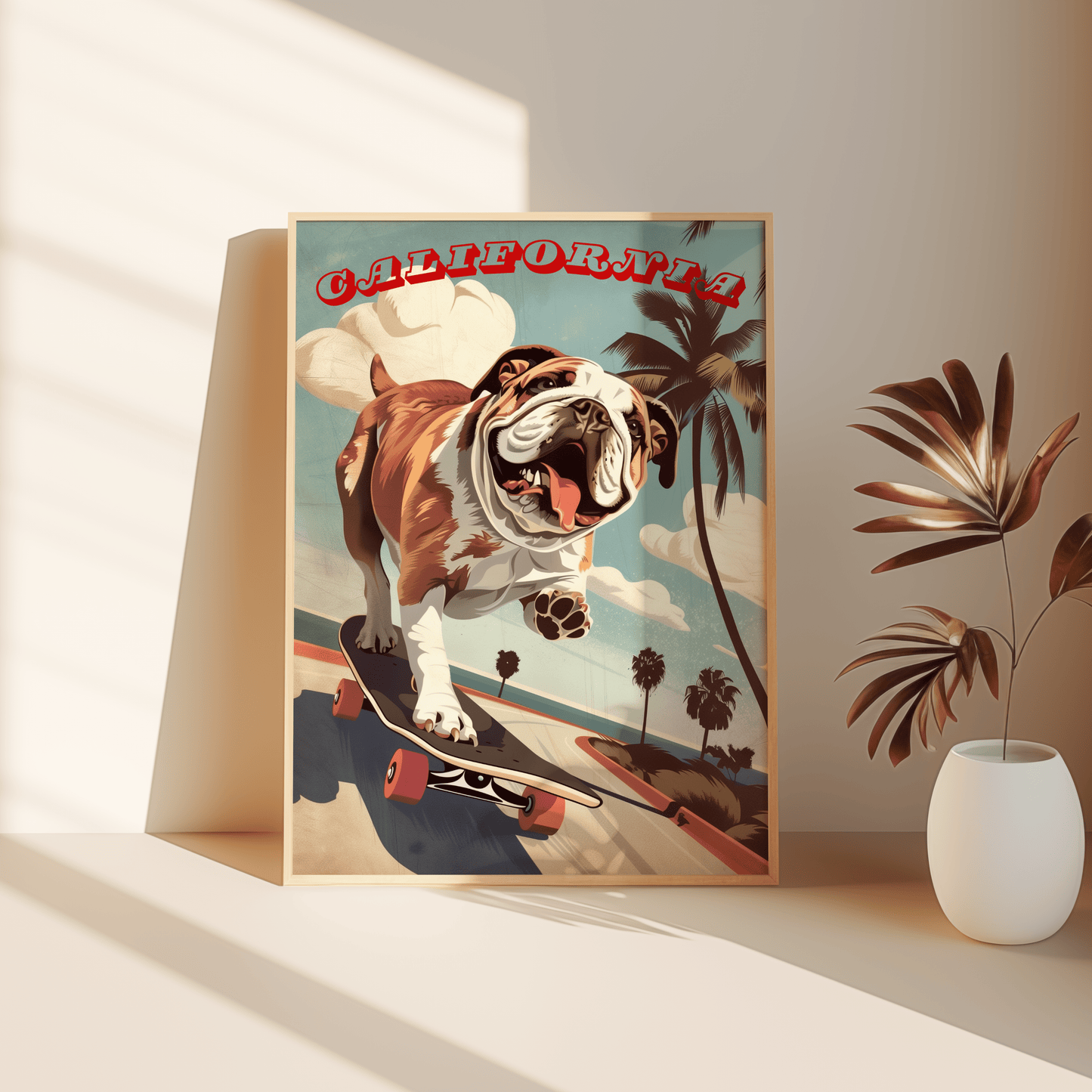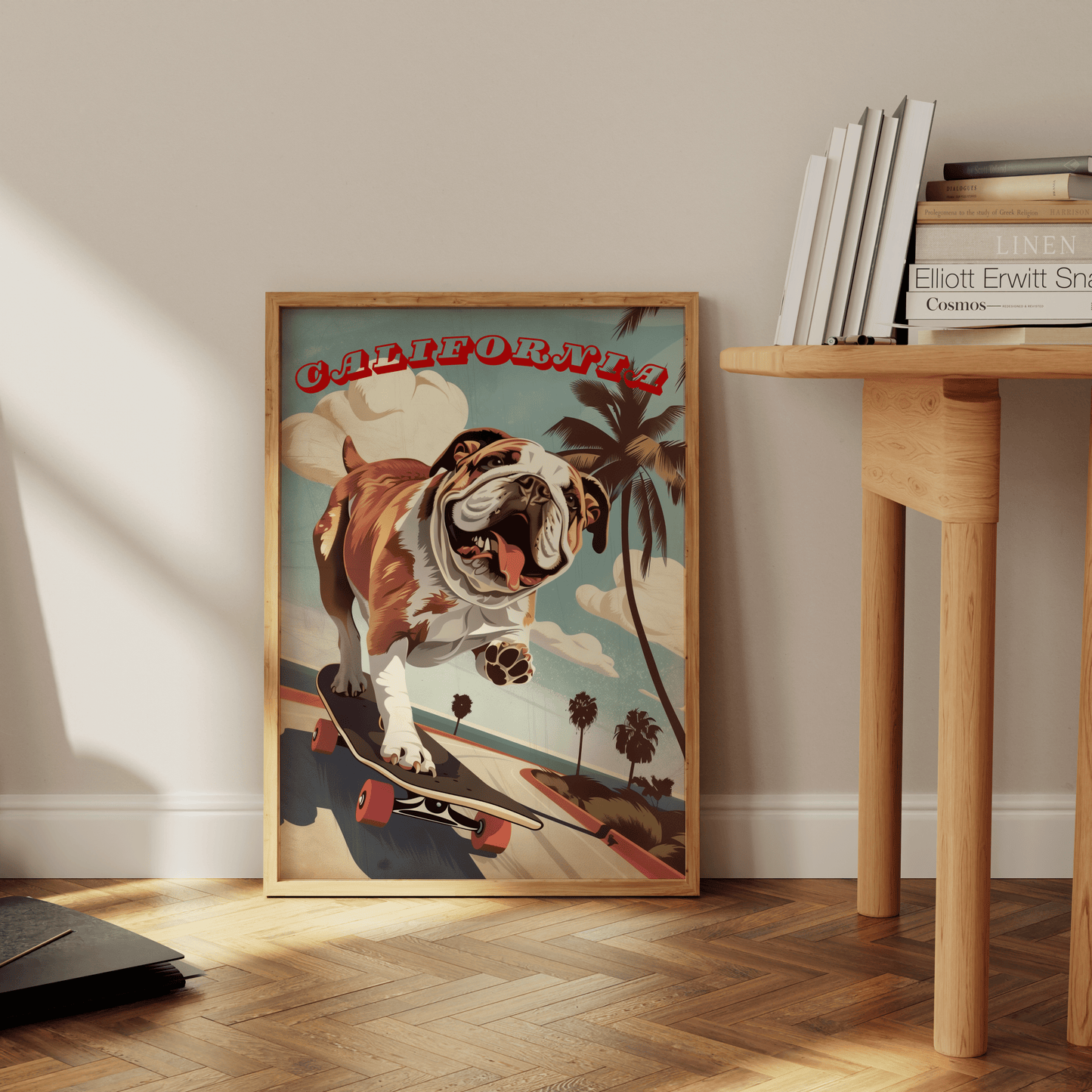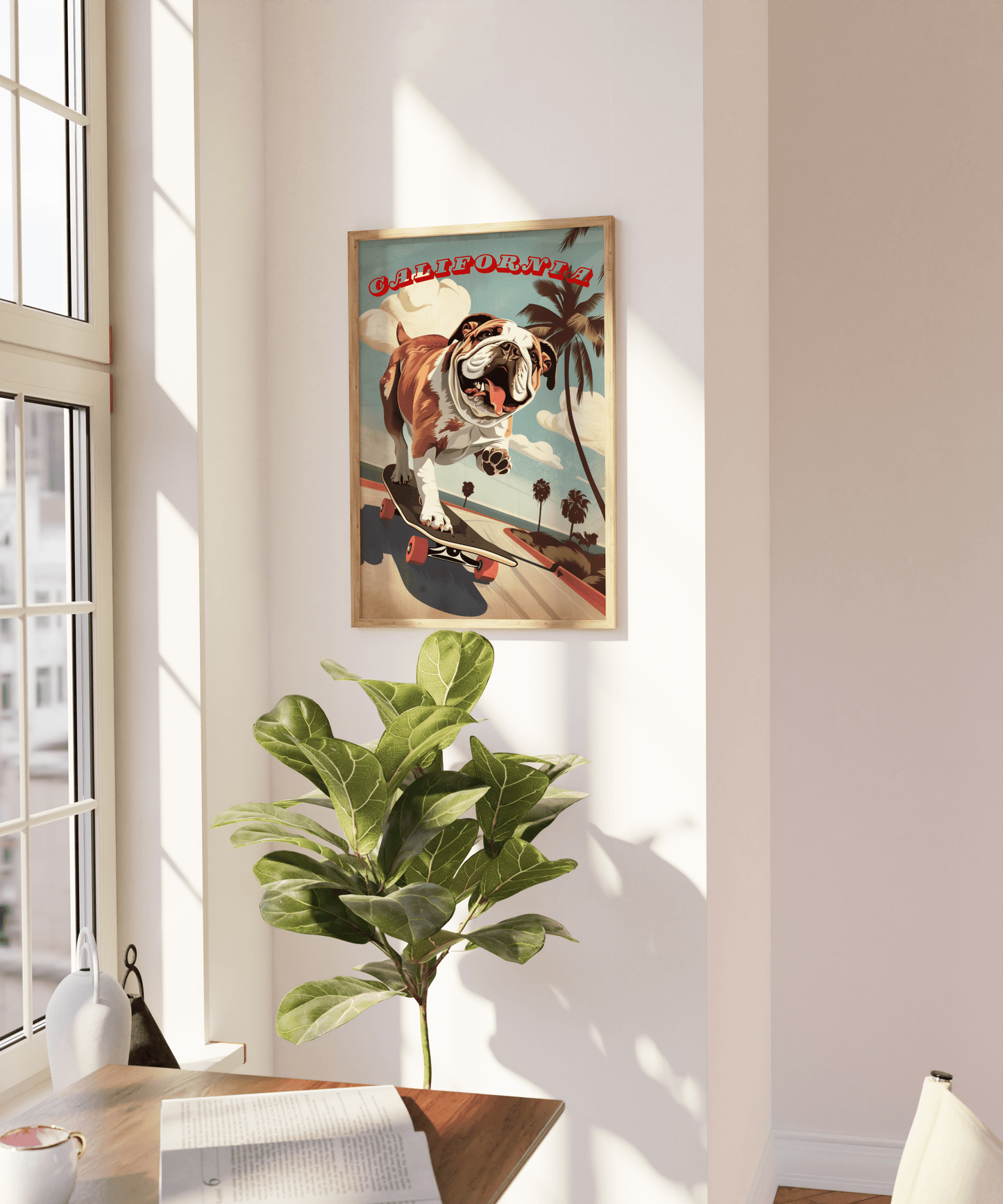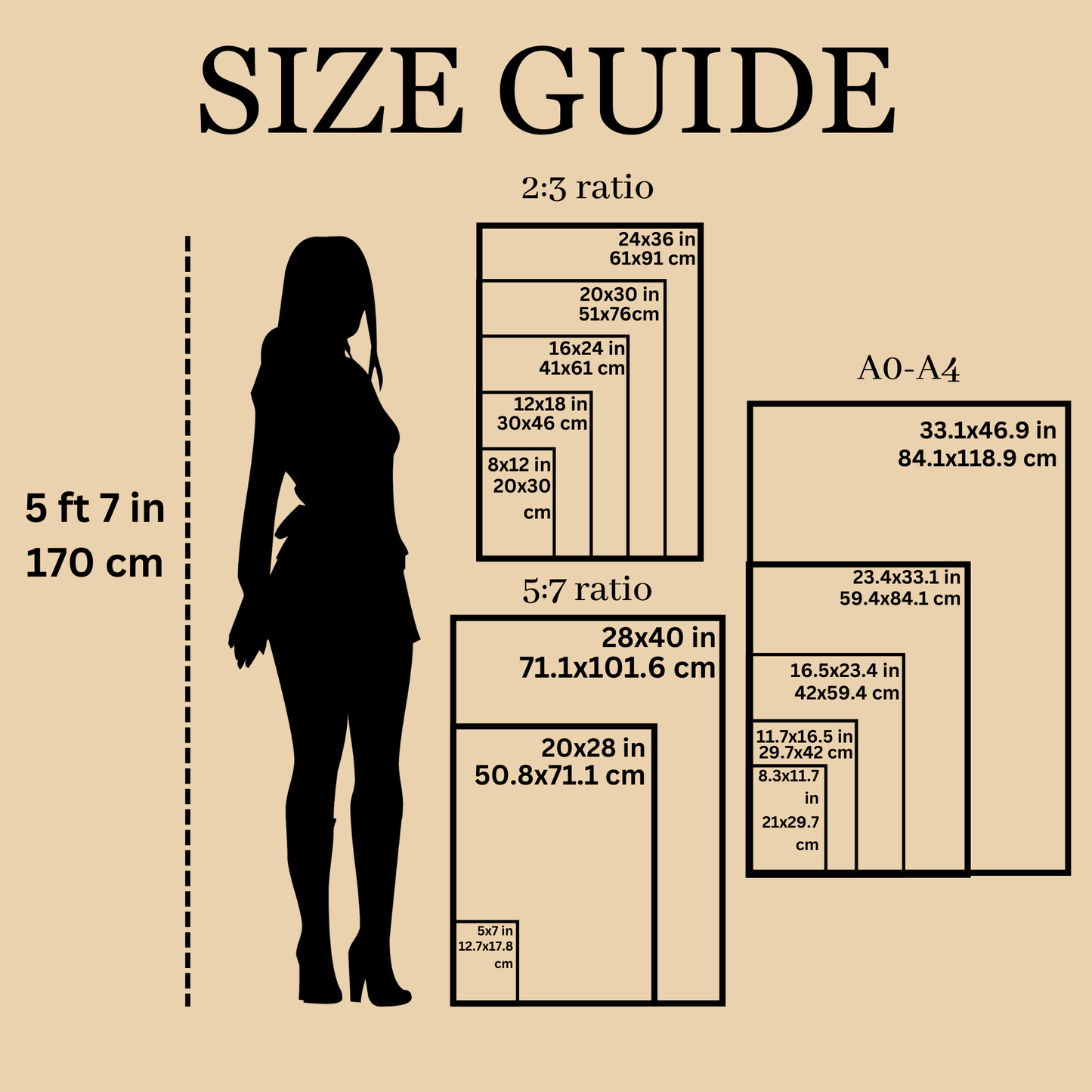What Are the Best Materials for Printing Posters?
Brian ShenShare
Poster making isn’t just about choosing the right paper, and if you think it is, this blog will open your eyes to so much more.
From image quality to paper finishes, the choices you make can make a huge impact on the final result. Whether you're designing for a bold marketing campaign or a sleek art display, understanding the right DPI, printing methods, and even the final touches like lamination or UV coating will ensure your posters are eye-catching and professional.
This blog will discuss everything you need to know to choose the best materials for your poster.
Table of Contents
- Why Does Image Quality Matter For Printing?
- What Are The Different Paper Finishes?
- What Is The Best Printing Method For Posters?
- Are There Final Touches for Perfecting a Poster?
- How to use environmentally friendly materials and printing methods?
- Key Takeaways
Why Does Image Quality Matter For Printing?
Printing a great poster design is not just about the paper material, but also the quality of the image that you are using. A pixelated poster will fail to display even the most creative and unique art works, even if it is printing onto quality poster paper.
DPI
DPI stands for Dots Per Inch and refers to the number of printed dots within a linear inch of an image.
The optimal DPI for printing high-quality posters is typically 300 DPI. According to a 2023 report from the American Institute of Graphic Arts (AIGA), 300 DPI ensures that the image remains sharp and clear, providing the best resolution for professional printing.
Anything lower, like 72 DPI (often used for web images), would result in pixelation and a loss of image detail when enlarged for print.
Pixels
Pixels are the tiny digital units that make up an image on a screen, and their size and number directly affect the quality of the printed image. The more pixels an image has, the finer the detail it displays when printed.
The higher the pixel count, the better the image is printed at a higher DPI. For example, if your image has a low pixel count but is printed at 300 DPI, it could appear blurry because the image doesn’t have enough data to fill the necessary dots per inch. According to the National Association of Printing Leadership, achieving the highest quality print requires an image resolution that matches the print size and DPI.
For most high-quality posters, a minimum pixel dimension of 3600 x 5400 is recommended for a 12x18 inch poster at 300 DPI.
What Are The Different Paper Finishes?
The main paper finishes used for posters are matte, glossy, and satin poster paper.
Matte
Matte paper has a non-reflective, flat finish that resists glare, making it ideal for displaying posters under bright lighting conditions.
It's commonly used for detailed images where clarity and subtlety matter most, such as fine art prints or architectural designs.
The lack of shine allows for deeper color consistency and prevents distracting reflections.
Posters like photographic prints, black and white designs, or anything requiring sharp detail work particularly well on matte paper.
Satin
Satin paper offers a semi-gloss finish, striking a balance between the flatness of matte and the shine of glossy paper.
It’s often used for posters with vibrant colors and graphic designs, as it adds a subtle sheen without overwhelming the viewer. Satin paper provides a good compromise, giving colors more depth while still being less reflective than glossy paper.
It works well for posters such as movie posters or travel-themed prints where a bit of shine enhances the visual impact without introducing too much glare.
Glossy
Glossy paper features a highly reflective surface, which makes colors appear more vibrant and images more eye-catching.
It is typically used for posters with bold, colorful graphics, such as advertising materials or photo-heavy designs. However, its reflective surface can cause significant glare under certain lighting conditions, which may detract from the poster’s quality.
Posters like concert ads or high-impact visual pieces often benefit from a glossy finish, but care should be taken with placement to avoid reflections.
Matte Vs Satin Vs Glossy
Matte paper resists fingerprints, fading, scratches, and glare, while adding depth and maintaining consistent colors.
Satin paper offers a balance between matte and glossy, combining vibrant colors with moderate sheen.
Glossy paper delivers the most vibrant colors but risks glare and potential loss of image detail in bright lighting.
Paw Prints recommends matte paper as the best choice.
What is GSM?
GSM stands for grams per square meter and refers to the weight of the paper. GSM is a key metric in printing and is used to identify paper quality.

Higher GSM indicates a heavier, thicker paper, which directly affects durability and quality.
Using paper with at least 150 GSM ensures that posters are sturdy, long-lasting, and less prone to tears, wrinkles, or fading. Thicker paper not only enhances the durability of the print but also gives it a more premium, professional feel.
Higher GSM paper is more expensive to produce, so if you prioritize quantity over quality, opt for lower GSM. However, for a single durable, high-quality poster, that stands the test of time, choose paper with a GSM above 150.
What Is The Best Printing Method For Posters?
Digital printing is a method that transfers digital images directly onto various printing surfaces. Just as there are multiple types of posters, there are multiple types of digital printing, each catering to different needs.
Inkjet and Laser
Inkjet printing works by spraying tiny droplets of ink onto paper, providing rich, detailed images with vibrant colors. Laser printing, on the other hand, uses a laser to fuse toner onto the paper.
According to research, inkjet printing is generally better suited for posters due to its superior color depth and finer details. Laser printing is more durable and cost-effective for high-volume runs but lacks the color richness needed for high-quality posters.
Solid Ink
Solid ink printing uses a waxy resin-polymer ink that’s melted and then applied to the paper. It is typically used for large-scale operations, such as graphic designers printing striking advertisements. Solid ink creates durable, long-lasting prints with vivid colors. However, due to its cost and the need for special equipment, it’s generally not the first choice for small-scale poster printing.
Digital Press
Digital press printing is a modern method that uses digital files to produce prints without the need for traditional printing plates. This method is ideal for high-volume orders such as booklets, brochures, leaflets, labels, and business cards. It’s a cost-effective and time-efficient option for large runs with quick turnaround times, offering good print quality at a lower price for bulk orders. Digital press is widely used for its ability to print directly from digital files, making it a great choice for projects that require frequent updates or customization.
Dye
Dye printing is a process that uses special dye-based inks to print vivid, high-quality images. This method is often combined with heat transfer techniques to print images onto various fabrics, making it popular for creating custom clothing, accessories, and merchandise. Dye printing ensures long-lasting colors that resist fading and is particularly useful when designing vibrant and detailed images for textiles, as it bonds well to fabric and offers durability through multiple washes.
Offset Printing
Although not a digital printing method, Offset printing is a traditional method where an inked image is transferred (or "offset") from a plate to a rubber blanket, and then to the printing surface. Offset printing is known for its high-quality output and is the go-to method for large-scale print runs like posters, magazines, and newspapers.
Research shows that offset printing is most cost-effective for large quantities because the unit cost decreases as the volume increases. Its ability to produce consistent, high-resolution images with sharp details makes it the preferred choice for projects that require precision and color accuracy.
Giclée Printing
Although not a digital printing method, Giclée printing is a method of fine art digital printing using archival quality inks and high-resolution printers. The term "giclée" comes from the French word for "spray," referring to how the ink is applied to the paper.
According to research from The Fine Art Trade Guild, giclée printing is ideal for producing high-end art prints because it delivers exceptional color accuracy and detail, often indistinguishable from the original artwork. It’s commonly used for fine art reproductions, photography prints, and museum-quality posters. Giclée printing is highly recommended for limited edition prints and artwork that requires long-lasting, vibrant color.
Are There Final Touches for Perfecting a Poster?
One can apply lamination, coating, or mounting, to enhance the artwork post-printing.
Lamination
Lamination is a process where a clear plastic film is applied to the surface of the poster, providing extra protection from wear and tear.
Pros of laminating include increased durability, protection against moisture, and the prevention of scratches. However, lamination can introduce glare, which may detract from the visual appeal of the poster, especially if it was printed on matte paper to avoid reflections. Laminating glossy paper can add even more glare, reducing the aesthetic quality by making it harder to view the details in certain lighting conditions.
Will UV Ink Protect Posters from Fading?
UV-resistant inks are specially designed to prevent fading when exposed to sunlight, making them ideal for outdoor posters.
UV ink provide better fade resistance and longevity in direct sunlight, making it ideal for billboards or outdoor signage. However, these inks may not always be necessary for indoor prints, where fading from light is less of a concern. Research from FESPA (2023) highlights that UV inks can last up to three years outdoors without significant fading but can be more costly compared to traditional inks.
UV Coating
UV coating involves applying a liquid coating that dries under ultraviolet light, creating a hard, glossy finish.
The pros of UV coating include its ability to enhance color vibrancy and provide protection against scratches and smudges. It also adds a high-shine finish, which makes the poster stand out. However, similar to lamination, UV coating can create unwanted glare, which may not be ideal for all environments.
Aqueous Coating
Aqueous coating is a water-based coating that provides a matte or semi-gloss finish.
It’s an environmentally friendly option compared to solvent-based coatings. The pros of aqueous coating include providing protection against fingerprints, smudges, and minor scratches while maintaining a smooth, natural finish. It’s less reflective than UV coating, making it a good option for posters where glare is a concern.
However, it offers less protection than lamination or UV coating for posters that will be displayed in high-traffic areas.
How Can You Mount Posters on Foam Board, Canvas, or Metal?
Mounting posters on foam board, canvas, or metal is a way to elevate their presentation.
Foam boards are lightweight and provide a sturdy backing for the poster, making them easy to display or frame.
Canvas mounting gives posters a more artistic feel, while metal prints offer a modern, sleek look. To mount a poster, you can use spray adhesive for foam boards or canvas.
For metal, special adhesives or magnetic mounting systems can be used. Each method gives the poster a professional, finished look while adding durability.
How to use environmentally friendly materials and printing methods?
Each year, over 1 billion trees' worth of paper is discarded in the U.S., contributing significantly to landfill waste. According to the EPA, non-recycled paper is part of the "third-largest source of methane emissions" in the U.S., accounting for 14.4% of emissions in 2022. To address this, it's crucial to purchase posters made from recycled paper, as it reduces the demand for virgin materials and helps decrease the amount of waste sent to landfills. Choosing brands that prioritize sustainability, like those using recycled paper, can make a significant impact.
Globally, less than 30% of ink cartridges are recycled, adding to landfill waste and increasing the production of new cartridges. Eco-friendly alternatives, such as soy-based or water-based inks, offer a more sustainable solution. These inks can reduce VOC (volatile organic compound) emissions by up to 75%, and their production leads to a 25-30% lower carbon footprint compared to traditional petroleum-based inks. Using recyclable ink options not only supports sustainability but also contributes to cleaner air and water, making it a responsible choice for printing posters.
What Is FSC Certified Paper?
FSC Certified Paper is paper that comes from responsibly managed forests, where the Forest Stewardship Council (FSC) ensures that trees are harvested in a way that maintains the forest’s biodiversity and ecological processes.
This certification helps prevent deforestation and supports sustainable practices. To tackle environmental challenges at their source, brands like Paw Prints use FSC Certified Paper, ensuring that their products contribute to the long-term health of forests and promote responsible consumption.
Key Takeaways
To reap. the full benefits of printing a great poster , there are several important factors to consider. Image quality is crucial, and using 300 DPI ensures high-quality prints, especially when paired with the right number of pixels to avoid blurriness in larger formats. Paper finishes also play a key role; matte finishes reduce glare and provide detail, satin balances shine and texture, and glossy finishes are ideal for vibrant, eye-catching designs. Choosing the right printing method depends on the purpose of the poster.
To perfect your posters, consider lamination for durability, though it may introduce glare. Alternatives like UV coating can enhance vibrancy, while aqueous coating provides an environmentally friendly option. Using recycled paper, opting for FSC Certified Paper, and choosing recyclable inks like soy-based or water-based inks help reduce environmental impact.
Consider supporting sustainable brands like Paw Prints, committed to both protecting the environment and supporting wildlife. A portion of every purchase is donated to charities that help protect animals and their habitats.
You can find us here: pawprints.com.co








